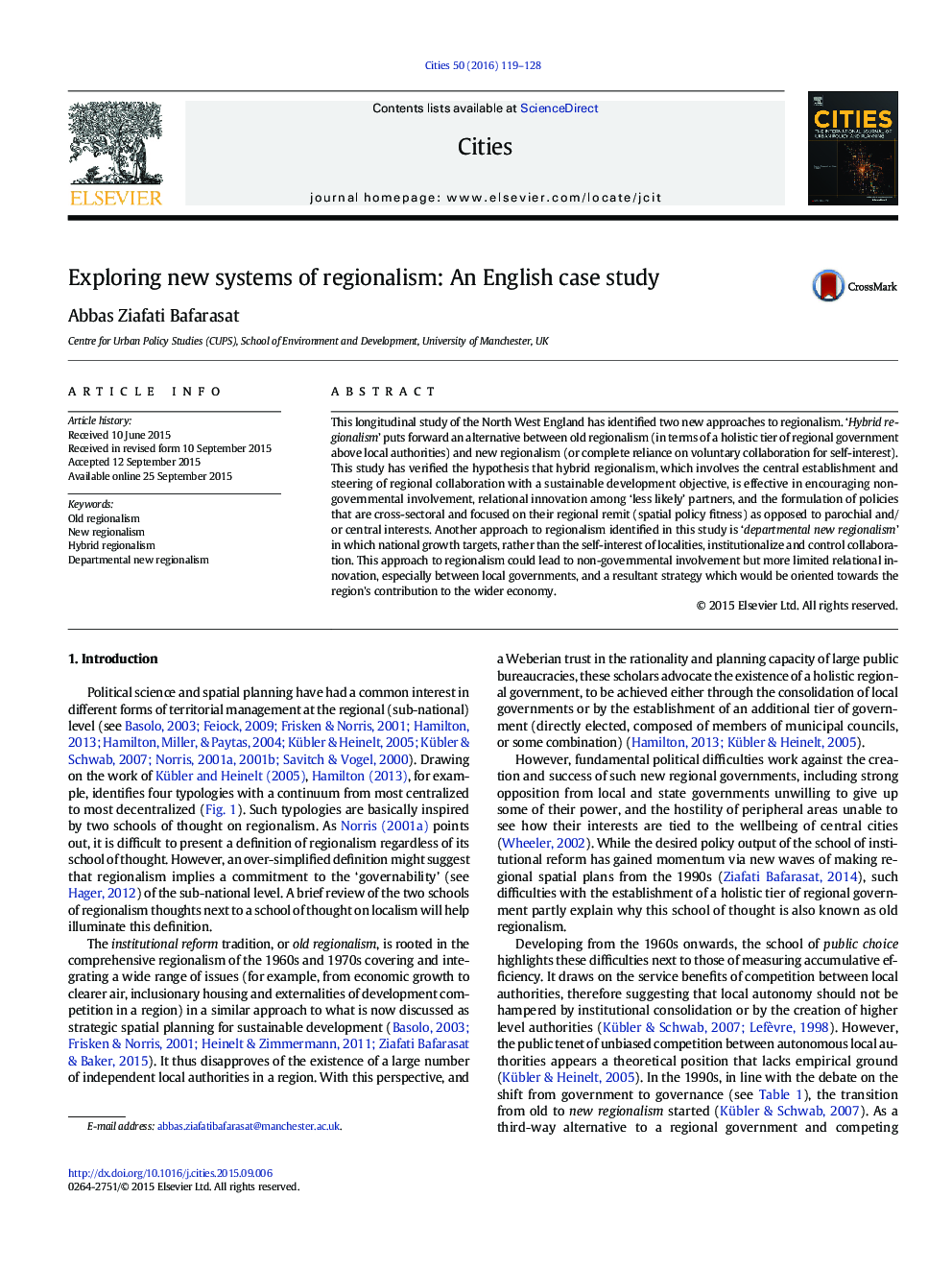| Article ID | Journal | Published Year | Pages | File Type |
|---|---|---|---|---|
| 1008208 | Cities | 2016 | 10 Pages |
•Based on an English case study, I have identified two new systems of regionalism.•Hybrid regionalism is a middle approach between old regionalism and new regionalism.•Departmental new regionalism promotes collaboration for sectoral (not local) interest.•I apply three evaluation criteria: inclusion, innovation, and spatial policy fitness.•Hybrid regionalism is found to be the most effective in addressing these criteria.
This longitudinal study of the North West England has identified two new approaches to regionalism. ‘Hybrid regionalism’ puts forward an alternative between old regionalism (in terms of a holistic tier of regional government above local authorities) and new regionalism (or complete reliance on voluntary collaboration for self-interest). This study has verified the hypothesis that hybrid regionalism, which involves the central establishment and steering of regional collaboration with a sustainable development objective, is effective in encouraging non-governmental involvement, relational innovation among ‘less likely’ partners, and the formulation of policies that are cross-sectoral and focused on their regional remit (spatial policy fitness) as opposed to parochial and/or central interests. Another approach to regionalism identified in this study is ‘departmental new regionalism’ in which national growth targets, rather than the self-interest of localities, institutionalize and control collaboration. This approach to regionalism could lead to non-governmental involvement but more limited relational innovation, especially between local governments, and a resultant strategy which would be oriented towards the region's contribution to the wider economy.
